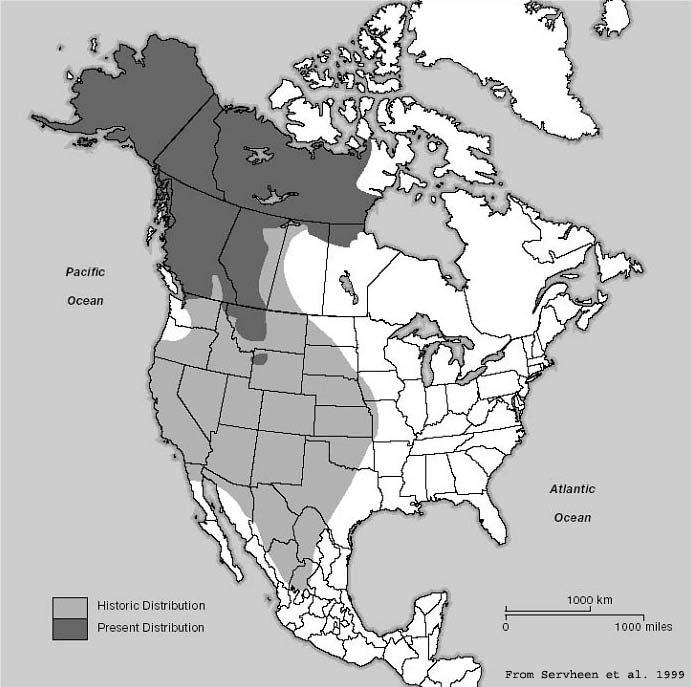Habitat and Geography
Grizzly bears live in a wide variety of habitats. They can be found in
forests, woodlands, prairies, mountains, meadows, desert, grassland, and
arctic tundra. They occupy the continents of Asia, Europe, and North
America (Hedstrom, 1993).
In North America, grizzly bears are currently found in Canada,
Alaska, and westward from Montana to Washington. They were previously found
all across the continent, from Mexico to Alaska (Grizzly, 2013). However, due to human
industrialization, their habitats in the southern portion of North America
have been destroyed (Horejsi, 2008). Currently, less than 2% of the
original grizzly bear habitat remains (Hedstrom, 1993).
U.S. Geological Survey
The number one threat to grizzly bears is habitat loss. The
huge loss of habitat is one of the causes that led to grizzly bears being
listed as an endangered species (Payton, 2001). Because grizzly bears require a large
amount of food to survive, they need a large amount of land to supply their
food source (Hedstrom, 1993). Grizzly Bears are very solitary animals and
they need large, open lands in order to live apart from other bears and human
influence (National, 2011). With the development of roads for timber and mining and the
expansion of industry as well as residential expansion, humans are intruding
on grizzly bear habitats (Bass, 2002). Grizzly bears also need space from
humans for their own protection. Hunting has led to the vast majority of
grizzly bear mortalities (Horejsi, 2008).
Another effect of human industrialization of grizzly habitat is the close
contact bears now have with humans. Due to the high demand for nutrients and
caloric intake in order to store fat for hibernation, grizzly bears are in a
non-stop search for food (Grizzly, 2013). Sometimes this may mean entering human settlements
when the bears cannot find a source of food in what is left of their
habitat. Their search for food often finds them digging in garbage cans or
feasting on livestock. It is believed that because of the close living
quarters, grizzly bears are becoming too comfortable around humans
(Atkinson, 2007). Instead
of avoiding human areas, bears are seeking them out in hopes of a free meal.
This can be dangerous to both the bears and humans.
During their hibernation period in the winter months, grizzly bears live in
dens. They commonly dig these dens under tree roots or find a resting place
inside a cave. They usually choose dens in high altitudes that will be
covered in snow during the winter as this creates an extra layer of insulation (Brown Bear,
n.d.).
